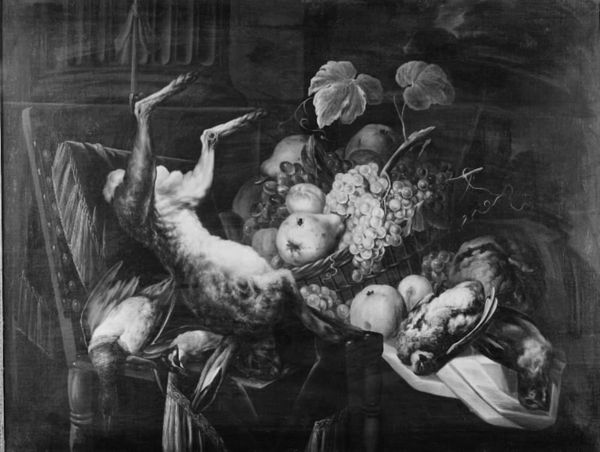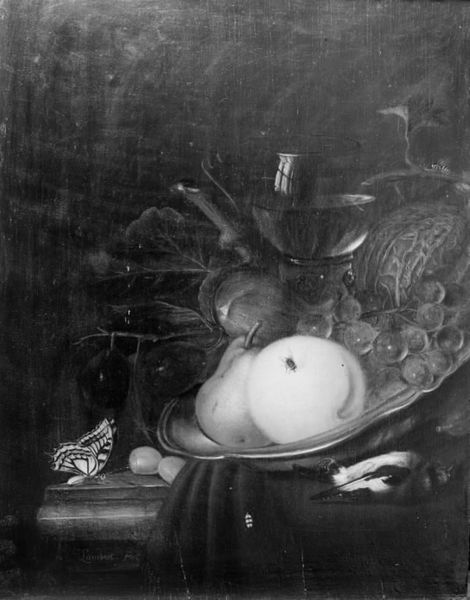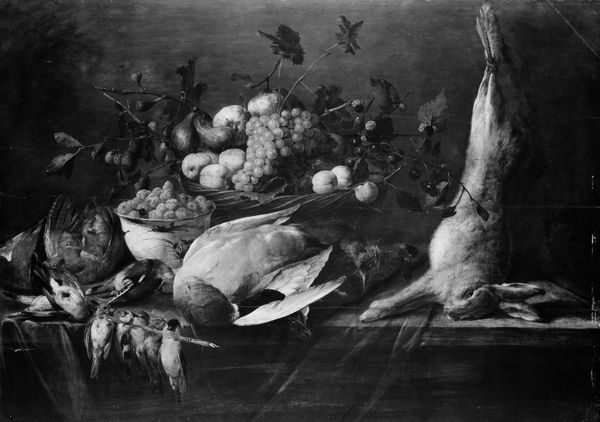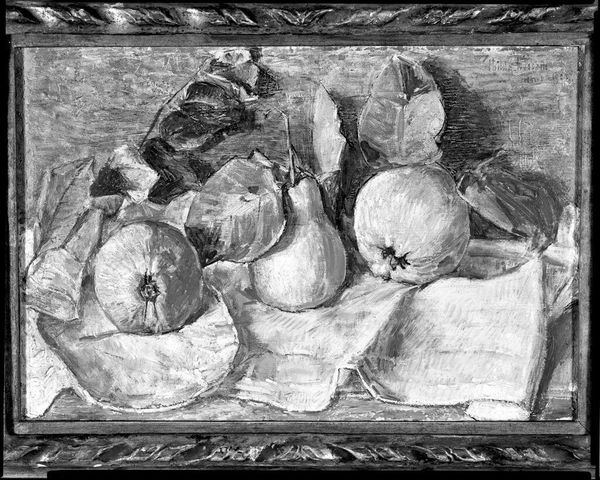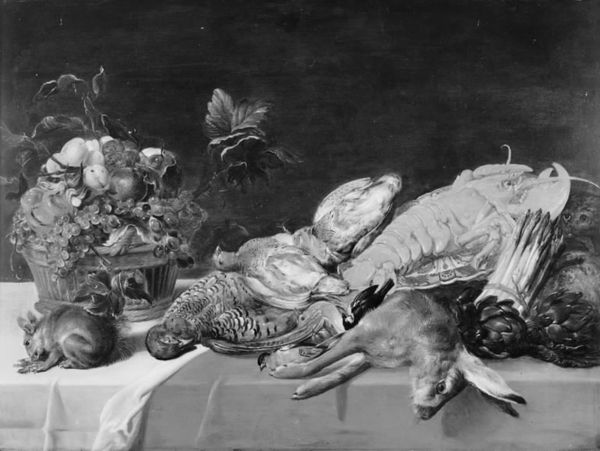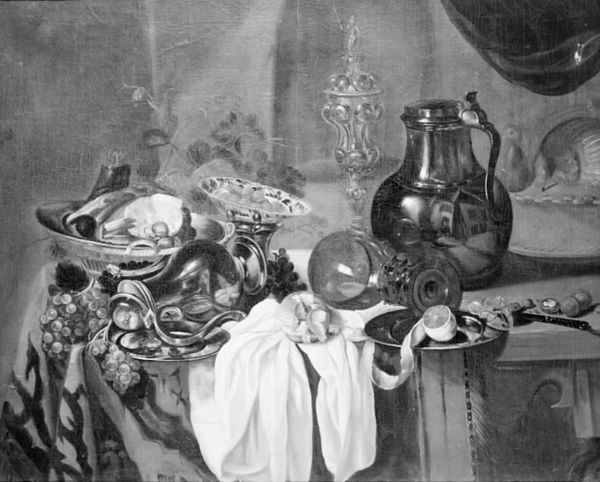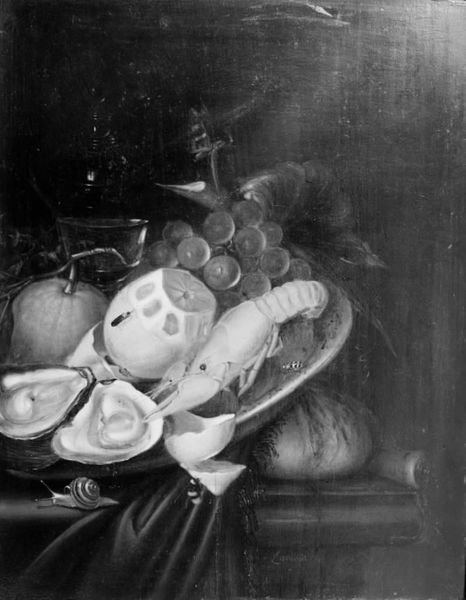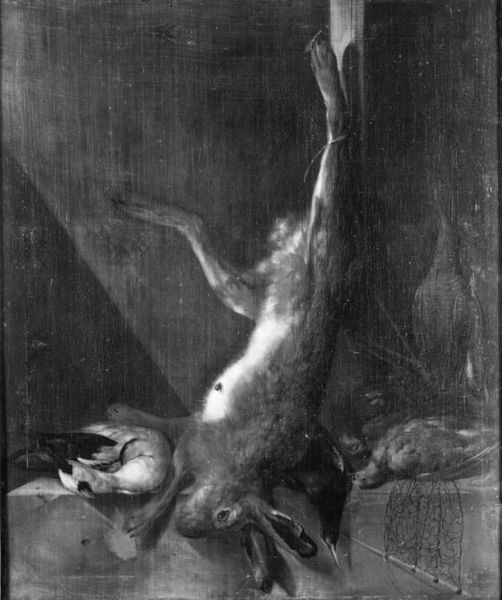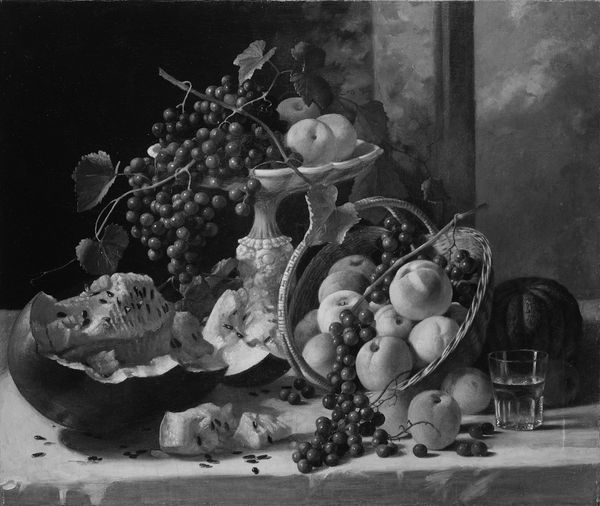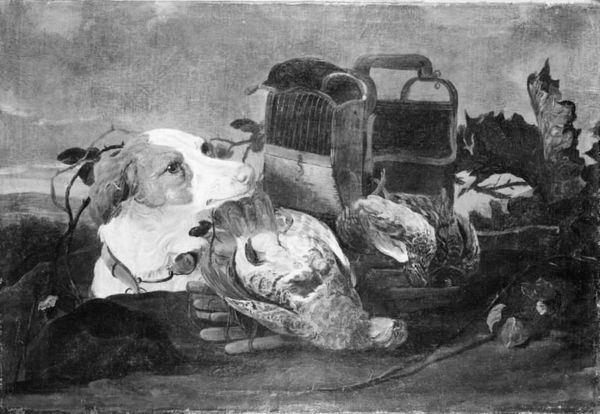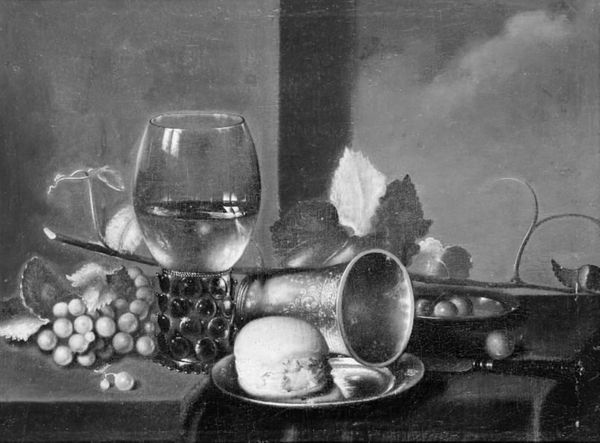
painting
#
painting
#
genre-painting
#
monochrome
#
realism
#
monochrome
Dimensions: 48 cm (height) x 62 cm (width) (Netto)
Curator: This is Frants Bøe's "A Basket with Vegetables," painted sometime between 1838 and 1841. It currently resides here at the SMK, the Statens Museum for Kunst. Editor: Well, my initial reaction is that it's... somber. Stark even. The monochrome palette lends an intensity, a stillness to this ostensibly everyday scene. Curator: Bøe was part of a burgeoning realist movement, turning away from grand historical narratives towards more quotidian subject matter. Still lifes like this gained traction in the burgeoning bourgeois market. This move reflected, in many ways, the democratic movements in Europe during the period. Editor: And what does the artist choose to represent? Produce, and interestingly a dead hare placed at the foot of the basket, disrupting that expected pastoral calm. This choice brings ideas around sustenance and class divisions into play. The hare perhaps functions as an economic indicator, the spoils of hunting indicating the availability of surplus. Curator: Exactly! Paintings like this served multiple purposes. Certainly, there's a level of display, an appeal to the burgeoning middle class with its newfound economic and domestic stability. These are, in a way, domestic fantasies. The artifice suggests an aesthetic purpose above all else. Editor: Do you see an aspirational undercurrent? To me, the inclusion of the hare doesn’t necessarily solidify that bourgeois comfort. What happens when a commodity, particularly a wild one, is removed from its natural context? Here, it reads as a stark reminder of labor and control. A visual symbol of man’s relationship to the natural world, loaded with sociopolitical implications. It pushes us beyond the mere aesthetic, and into questions of value, survival, and, ultimately, power dynamics. Curator: That's a very interesting point. Perhaps we’re both seeing facets of the painting's intent, reflections of the complex social and economic changes of the time. It could simultaneously portray aspiration and provide commentary. Editor: I think that’s right. This piece serves as a poignant intersection for multiple narratives about Danish society. Curator: I’ll be thinking about that tension for a while now. It highlights just how much one can extract from seemingly simple depictions.
Comments
No comments
Be the first to comment and join the conversation on the ultimate creative platform.
